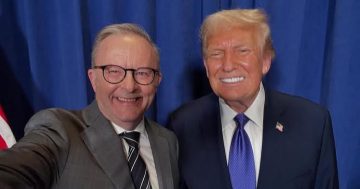Lisa Earle McLeod* says high-performers in business often reject compromise — but they do look at ways of cooperation that can make their ideas bigger and better.
 When opposing ideas clash, it’s tempting to believe that comprise is the answer — but that’s a mistake.
When opposing ideas clash, it’s tempting to believe that comprise is the answer — but that’s a mistake.
High-performing individuals and organisations recognise there’s a big difference between compromise and cooperation.
Compromise waters down your ideas, cooperation makes your ideas better.
In his address to the nation, United States President-elect, Joe Biden said: “I believe that as part of the mandate from the American people, they want us to cooperate.”
Yet multiple news sources translated his call for cooperation into a mandate for compromise.
To use these terms interchangeably is a recipe for failure.
Compromise means giving something up. Over time this will erode trust, and it chips away at your best thinking. The result is mediocrity at best.
Cooperation is about being open to the possibility of creating something bigger and better with someone who on the surface may look like an adversary.
As someone who has studied conflict for over a decade and authored a book on the topic, here’s what I know to be true.
If you enter a negotiation assuming that you are going to have to compromise, you protect your flank.
A compromise mindset puts you in a defensive posture and keeps you thinking small.
There are three techniques top performers use in high-stakes conversations to avoid the compromise trap and seek higher cooperation instead.
Loosen your grip on your solution
Every night at Disney Parks around the world Tinker Bell kicks off the fireworks show by flying down to light the top of the castle.
It’s an act that could potentially pit two of Disney’s key values — safety and show — against each other.
The safety team would likely see Tinker Bell standing on solid ground, waving a flashlight.
The show team would probably love to send Tink flying miles above the park fuelled by an invisible jet pack, holding a lit firework in her hand.
Yet they don’t do either of these things. Instead of doubling down on rigid solutions, the safety and show teams collaborate.
Neither team compromises on their core priority; they collaborate to form a solution that addresses both.
Night after night, Tinker Bell flies safely down on a seemingly invisible wire, lights the castle, and starts the fireworks.
You can demonstrate this yourself by saying: “Let’s put our tactical solutions on pause for a moment, what are the bigger outcomes we want to achieve?”
Step into uncertainty, for a moment
In a high stakes conversation, it’s tempting to want to lock down answers quickly.
However, our assessments have revealed that even an additional 15 minutes spent exploring multiple alternatives leads to better outcomes.
Top performers don’t jump to solutions too quickly; their willingness and ability to temporarily sit with uncertainty ultimately strengthens collaboration.
Even if only one side exhibits this trait, it unlocks more creativity.
Ask the person on the other side of the table if the two of you can spend the first part of the conversation exploring the subject itself without committing to particular ideas.
Find a shared purpose
When John Adams and Thomas Jefferson were elected to the Continental Congress in 1775, they had no way of knowing their shared purpose, yet differing ideologies, would shape the United States for centuries to come.
While as individuals they were far from perfect, their collaboration created the Declaration of Independence.
Jefferson wrote the document, and Adams, along with Benjamin Franklin. edited it.
Innovation requires creative tension. In business, the finance, marketing, sales, and HR departments have (seemingly) competing priorities.
In families, the push-pull of spend vs save can create conflicts.
Yet, when differing perspectives collaborate in the service of a larger shared purpose the creative tension works for the institution, rather than against it.
Adams and Jefferson shared a belief that democracy was better than aristocracy, and that life, liberty, and the pursuit of happiness were noble causes worth fighting for.
High performers know that arguing about how to solve problems doesn’t mean you don’t care; it means that you do care, deeply.
If you’re having trouble finding a shared purpose, ask the other person why their solution is important to them.
Questions like: What impact do you want to have on the people we serve? will help them (and you) articulate a larger purpose.
Compromise and collaboration are two entirely different practices.
Compromise gives everyone less of what they really want. Collaboration builds trust and creates solutions bigger than either side could develop on their own.
Using the above techniques in high-stakes conversations will jump-start collaboration in your organisation, be it a family, business, or nation.
*Lisa Earle McLeod is the leadership expert best known for creating the popular business concept Noble Purpose. She is the author of Selling with Noble Purpose and Leading with Noble Purpose. She can be contacted at mcleodandmore.com.
This article first appeared at mcleodandmore.com.











